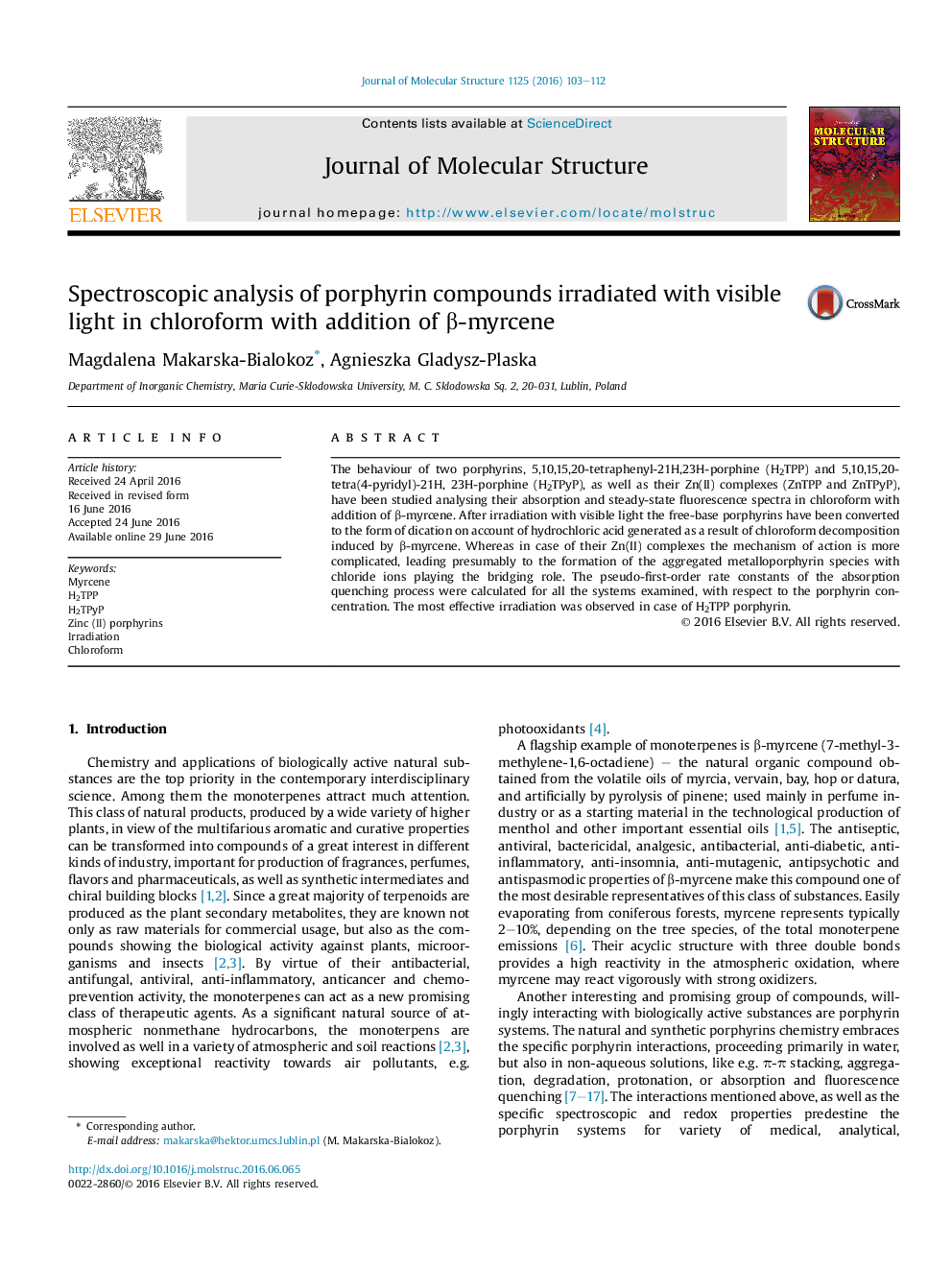| Article ID | Journal | Published Year | Pages | File Type |
|---|---|---|---|---|
| 1400920 | Journal of Molecular Structure | 2016 | 10 Pages |
•Molecular form evolution of porphyrins irradiated in CHCl3 with β-myrcene was studied.•Free-base porphyrins were converted to dications by HCl from CHCl3 decomposition.•ZnP were converted to aggregated metalloporphyrins with Cl− playing the bridging role.•The pseudo-first-order rate constants of absorption quenching process were calculated.•The most effective irradiation was observed in case of H2TPP porphyrin.
The behaviour of two porphyrins, 5,10,15,20-tetraphenyl-21H,23H-porphine (H2TPP) and 5,10,15,20-tetra(4-pyridyl)-21H, 23H-porphine (H2TPyP), as well as their Zn(II) complexes (ZnTPP and ZnTPyP), have been studied analysing their absorption and steady-state fluorescence spectra in chloroform with addition of β-myrcene. After irradiation with visible light the free-base porphyrins have been converted to the form of dication on account of hydrochloric acid generated as a result of chloroform decomposition induced by β-myrcene. Whereas in case of their Zn(II) complexes the mechanism of action is more complicated, leading presumably to the formation of the aggregated metalloporphyrin species with chloride ions playing the bridging role. The pseudo-first-order rate constants of the absorption quenching process were calculated for all the systems examined, with respect to the porphyrin concentration. The most effective irradiation was observed in case of H2TPP porphyrin.
Graphical abstractFigure optionsDownload full-size imageDownload as PowerPoint slide
